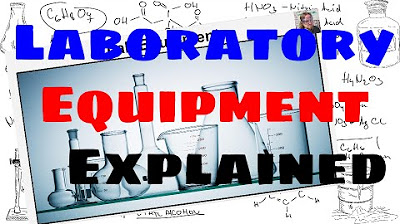Functional Groups
Summary
TLDRIn this educational video, Mr. W from Learn-Biology.com explores the significance of eight functional groups in molecular biology. He explains how hydroxyl, carbonyl, carboxyl, amino, sulfhydryl, phosphate, methyl, and acetyl groups influence molecular properties and biological functions. These groups are crucial for understanding solubility, acidity, protein structure, DNA function, and gene expression, as exemplified by their roles in glucose, caffeine, and acetaminophen.
Takeaways
- 🔬 There are eight key functional groups that are crucial for understanding molecular functions.
- 💧 The hydroxyl group (-OH) is polar and hydrophilic, making molecules with this group water-soluble.
- ☕ Caffeine in coffee contains a carbonyl group (C=O), which is polar and hydrophilic.
- 🍋 The carboxyl group (-COOH) can ionize in water, releasing a hydrogen ion and acting as a weak acid.
- 🌿 Amino groups (-NH2) are basic and can accept protons, increasing pH when in water.
- 🔗 Sulfhydryl groups (-SH) are important for protein structure, as they can form disulfide bridges.
- 🧬 Phosphate groups (PO4^3-) are acidic and play a critical role in the structure of DNA and ATP.
- 🔄 Methylation, the addition of methyl groups (-CH3), can modify DNA and control gene expression.
- 💊 Acetylation, the addition of an acetyl group (-COCH3), can influence gene transcription and is found in acetaminophen (Tylenol).
- 📚 For further learning, the video encourages visiting Learn-Biology.com for tutorials and subscribing for more educational content.
Q & A
What are functional groups and why are they important in understanding molecules?
-Functional groups are specific groups of atoms within molecules that determine the chemical reactivity and physical properties of those molecules. They are important because they explain how molecules work and interact in chemical reactions.
What is the hydroxyl functional group and how does it affect the solubility of molecules?
-The hydroxyl functional group consists of an oxygen and a hydrogen atom. It is polar, with the oxygen having a partial negative charge and the hydrogen a partial positive charge. This polarity makes regions of molecules with hydroxyl groups hydrophilic, which means they are water-soluble.
How does the carbonyl functional group contribute to the polarity and hydrophilicity of molecules?
-The carbonyl group is a carbon double bonded to an oxygen, which creates polarity due to the difference in electronegativity between carbon and oxygen. This polarity makes the carbonyl group hydrophilic, allowing molecules containing it to interact with water.
What is the carboxyl functional group and how does it behave in water?
-The carboxyl functional group is a carbonyl group with the carbon also attached to a hydroxyl group. In water, the hydrogen from the hydroxyl tends to break off, making the carboxyl group a weak acid and leaving behind an ionized form, which is commonly found in cells.
How does the amino functional group affect the pH of a solution?
-The amino group, consisting of a nitrogen attached to two hydrogens, makes a molecule a base. In water, it can pick up a proton from the solution, increasing the pH and resulting in the amino group having three hydrogens and a positive charge.
What role do sulfhydryl functional groups play in protein structure?
-Sulfhydryl groups, consisting of a sulfur bonded to a hydrogen, are important in protein structure because they can form disulfide bridges when two sulfhydryl groups come close to each other. These bridges create turns and bends in the protein chain, determining the protein's overall shape.
What is the phosphate functional group and how does it contribute to the acidity of molecules?
-The phosphate functional group is a negatively charged ion with one phosphorus atom surrounded by four oxygen atoms. It makes molecules acidic and is found in various important biomolecules such as DNA, phospholipids, and ATP.
What is a methyl group and how does it affect the polarity of a molecule?
-A methyl group is a carbon connected to three hydrogens. It creates a nonpolar region in a molecule when added. Cells use methylation, the process of adding methyl groups, to modify DNA, which can turn off gene transcription when DNA is methylated.
What is the acetyl functional group and what is its role in gene expression?
-The acetyl group consists of a methyl group bonded to a carbonyl. Adding an acetyl group to a molecule is called acetylation. In gene expression, cells can add an acetyl group to certain regions of DNA to make it easier for genes in those regions to be transcribed.
What is the significance of the functional groups discussed in the video for biological processes?
-The functional groups discussed are significant for various biological processes. For example, hydroxyl groups contribute to water solubility, carboxyl groups are involved in acid-base reactions, amino groups affect pH and can act as bases, sulfhydryl groups influence protein folding, phosphate groups are crucial for energy transfer and storage, and methyl and acetyl groups play roles in DNA modification and gene expression.
Outlines

This section is available to paid users only. Please upgrade to access this part.
Upgrade NowMindmap

This section is available to paid users only. Please upgrade to access this part.
Upgrade NowKeywords

This section is available to paid users only. Please upgrade to access this part.
Upgrade NowHighlights

This section is available to paid users only. Please upgrade to access this part.
Upgrade NowTranscripts

This section is available to paid users only. Please upgrade to access this part.
Upgrade NowBrowse More Related Video

The Four States of Matter - Explained

Lab Equipment - Explained

3. Gr 11 Life Sciences - Population Ecology - Theory 3 Mark Recapture Method

4. Gr 11 Life Sciences - Population Ecology - Worksheet 1

PENJASKES KELAS X - SOFTBALL

Introduction to Culture [AP Human Geography Review Unit 3 Topic 1]

Menentukan Mr ( massa molekul relatif )
5.0 / 5 (0 votes)